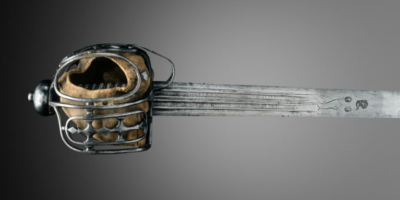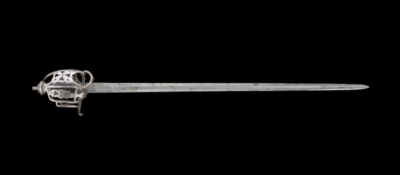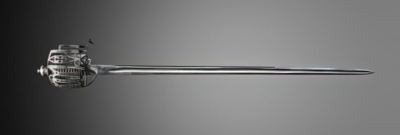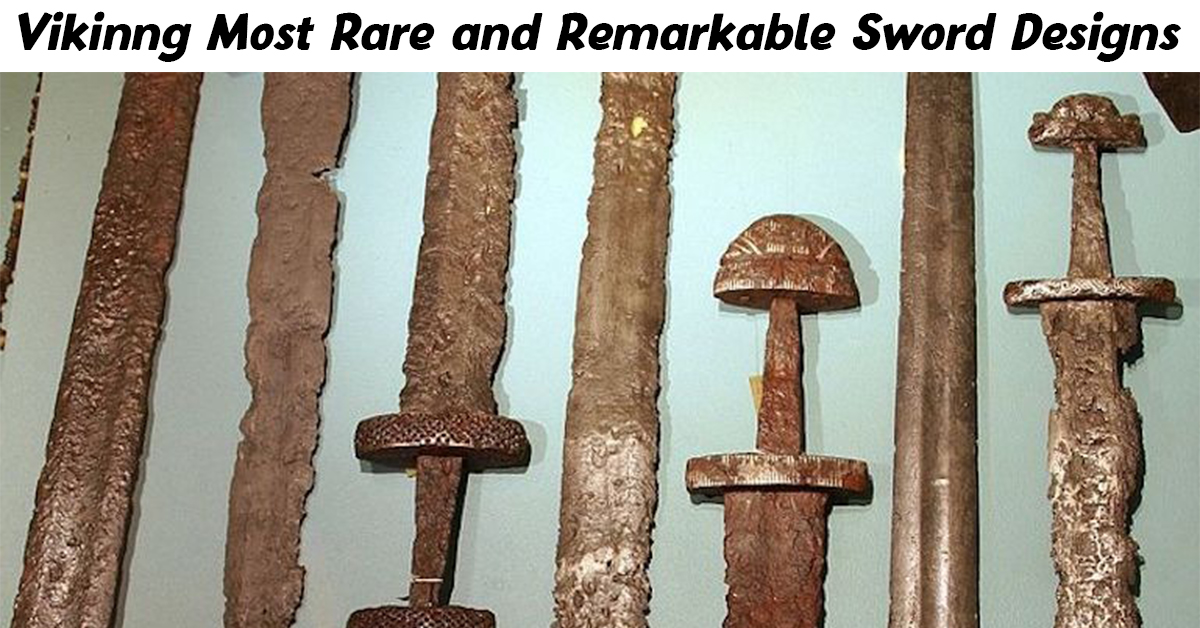Blog
Broadsword: From Medieval Might to Modern Marvel
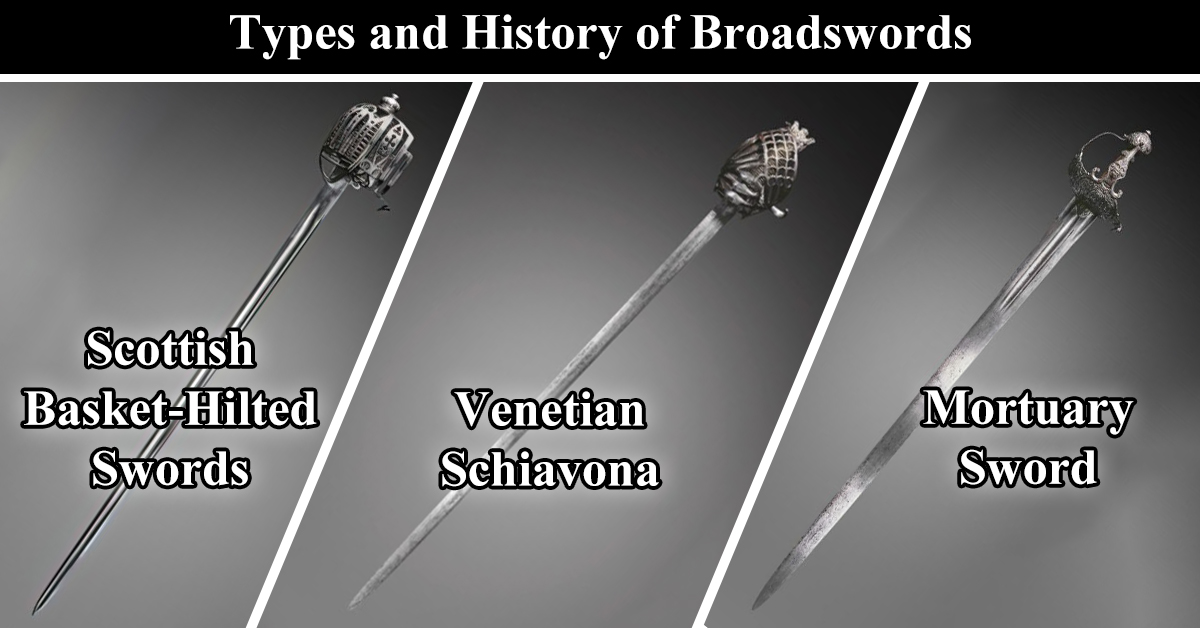
Introduction of Broadswords:
In the dynamic stage of historic battles, broadswords emerge as both elegant tools and fierce weapons, slicing through the chaos of the Highland charge or the thunderous clash of cavalry with deadly precision. Rooted in military history from the 17th to the 19th centuries, these iconic swords epitomize both the grace and brutality of warfare, embellished with wide, straight blades and designed for two-handed gripping. From the Scottish claymore to the English basket-hilted sword, each variation reflects unique styles, shaping the course of warfare over centuries. Delving into their evolution unveils not just technological advancements, but also the shifting tactics and strategies that defined combat. This exploration illuminates the intricate relationship between weapon and wielder, offering profound insights into the ever-evolving story of military history.
What is a Broadsword?
A broadsword is a strong sword used in the military. It has a wide, sharp blade made for cutting, not just poking like some other swords. To protect the hand, it has a guard shaped like a basket. This guard keeps the hand safe in fights. Broadswords were popular in battles because they were good for close combat and slashing enemies. They were often used by soldiers on foot or horseback, showing their power and versatility in warfare.
Characteristics of Broadswords:
A broadsword often implies a military sword with a broad, straight, double-edged blade, mostly equipped with basket hilts.
Click Here and Buy a Long Sword
Here are the general characteristics of broadswords:
Metal and Construction:
Broadswords often have blades made in Germany’s Solingen region, known for their quality. In Scotland, they were combined with locally crafted basket hilts. Some blades, labeled “Andrea Ferrara,” were highly prized for their durability and flexibility, while others were of lesser quality.
Blade Appearance:
A typical broadsword has a wide, straight, double-edged blade, often with three fullers to reduce weight without sacrificing strength. Some variations include a ricasso and a blunt section near the hilt. However, some basket-hilted swords may have straight, single-edged blades, distinguishing them as backswords.
Size and Weight:
Broadswords come in various sizes, with overall lengths exceeding 100 centimeters and blade lengths around 90 centimeters. Historical examples weighed approximately 3 lbs, although weight and dimensions varied among different designs.
Sword Mounting:
Key to a broadsword’s design is the basket guard, providing excellent hand protection. It consists of woven metal strips forming a cage around the grip. Each type of broadsword features a unique basket hilt design, pommel, and decorative elements, distinguishing them from one another and versatility in warfare.
Distinguishing Broadswords from Similar Swords:
Broadsword vs. Backsword:
A backsword with a basket guard – from National Museums Scotland
Broadswords have two sharp edges, enabling them to cut and slash on the battlefield. In contrast, backswords, being single-edged cutting weapons, were primarily intended for dueling and self-defense among civilians. Dual-edged broadsword gives more flexibility through the array of attacks that it allows the opponent as compared to the single-edged backsword.
Broadsword vs. Arming Sword:
Broadswords evolved from earlier arming swords. While both have double-edged blades, arming swords were primarily designed for thrusting and cutting. In contrast, broadswords have wider blades optimized for powerful cutting strokes. Arming swords were popular in earlier periods, while broadswords gained prominence from the 17th to the 19th centuries, becoming the preferred weapon for infantry and cavalry in military engagements.
Types of Broadswords:
Scottish Claymore:
Basket-hilt broadsword,1740 – from: Cleveland Art Museum
The Scottish Claymore Claymore is symbol that denounces the country’s warfare experience, having a very long thin blade and exclusive basket hilt. A favorite weapon among the battlefield warriors of the Highland saw, the Claymore typically bore the brunt of a two-handed swing that proved effective at inflicting lethal cuts. The name Great Sword or the Gaelic word “caillean”, its imposing appearance, and history place it among the most impressive monuments of Scotland. The basket hilt, which ensures the safeguard of the hand and a solid grip, is them the emblem of its combat readiness and effectiveness. During the late medieval period to the Renaissance, this formidable broadsword stood at the forefront of the Scottish military, earning it a special place in the annals of military history.
English Basket-Hilted Sword:
The traditional basket hilt sword design, though associated with Scotland, actually originated from an earlier English version dating back to the 1560s. It wasn’t until the late 16th century that it became linked with Scottish Highlanders. This design also influenced military swords, including those used by English Dragoon officers, between 1750 and 1775. In Scotland, Highland warriors often paired broadswords with dirks and targes, relying on this combination for charging into battle. Conversely, the English Basket-Hilted Sword provided superior hand protection, making it a favored choice among English infantry and cavalry for its versatility on the battlefield.
History of Broadswords:
The term “broadsword” emerged in the 17th century to describe military swords with broad blades, contrasting them with the narrower rapiers and small swords used for civilian purposes. While similar swords with wide blades existed earlier, they weren’t called broadswords. However, historically, medieval swords with broad blades were not referred to as broadswords. Knights wielded swords efficient for slashing and thrusting, categorized as arming swords, longswords, or falchions in Historical European Martial Arts (HEMA).
The Scottish basket-hilted broadsword, sometimes called a claymore, was significant in Scottish history, though debates persist on its precise definition. Broadswords served as potent cutting weapons, especially effective on horseback, as seen in the Scottish Highland warriors’ use of broadswords alongside targe shields and dirks, a type of long dagger. During the late medieval period to the Renaissance, this formidable broadsword held a prominent position in the Scottish military, earning it a special place in the annals of military history.
Broadswords Today: Continuing Legacy and Modern Applications
People still love broadswords today! They use them in cool ways like acting out old battles or learning ancient fighting moves in martial arts. You can see broadswords in movies and video games too, making them famous symbols of bravery and excitement. Whether it’s swinging swords at a historical event or watching heroes fight on screen, broadswords keep their awesome reputation alive.
Conclusion of Broadswords:
In conclusion, broadswords hold a rich history and enduring significance in warfare and culture. The history of their development, from the beginning in the medieval period to their use extensively in battles in Europe, Africa, and the Middle East, tells how quiet and sharp a sword can be. Nowadays, broadswords persist lingering in the imagery of their path-makers by means of historical reenactments, HEMA (a type of martial arts) practices, and also reinforced advertising in popular culture, especially by means of movies and video games. Whether in the hands of historical reenactors or virtual warriors, broadswords remain symbols of bravery and excitement, ensuring their legacy lives on in contemporary society as iconic weapons of the past.
Were broadswords used in battle?
The broadsword was widely used in Europe, Africa, and the Middle East during the 13th and 14th centuries. Its versatility made it handy for both attack and defense. Because of its strength, it could cut through armor plates with ease, making it a formidable weapon on the battlefield.
